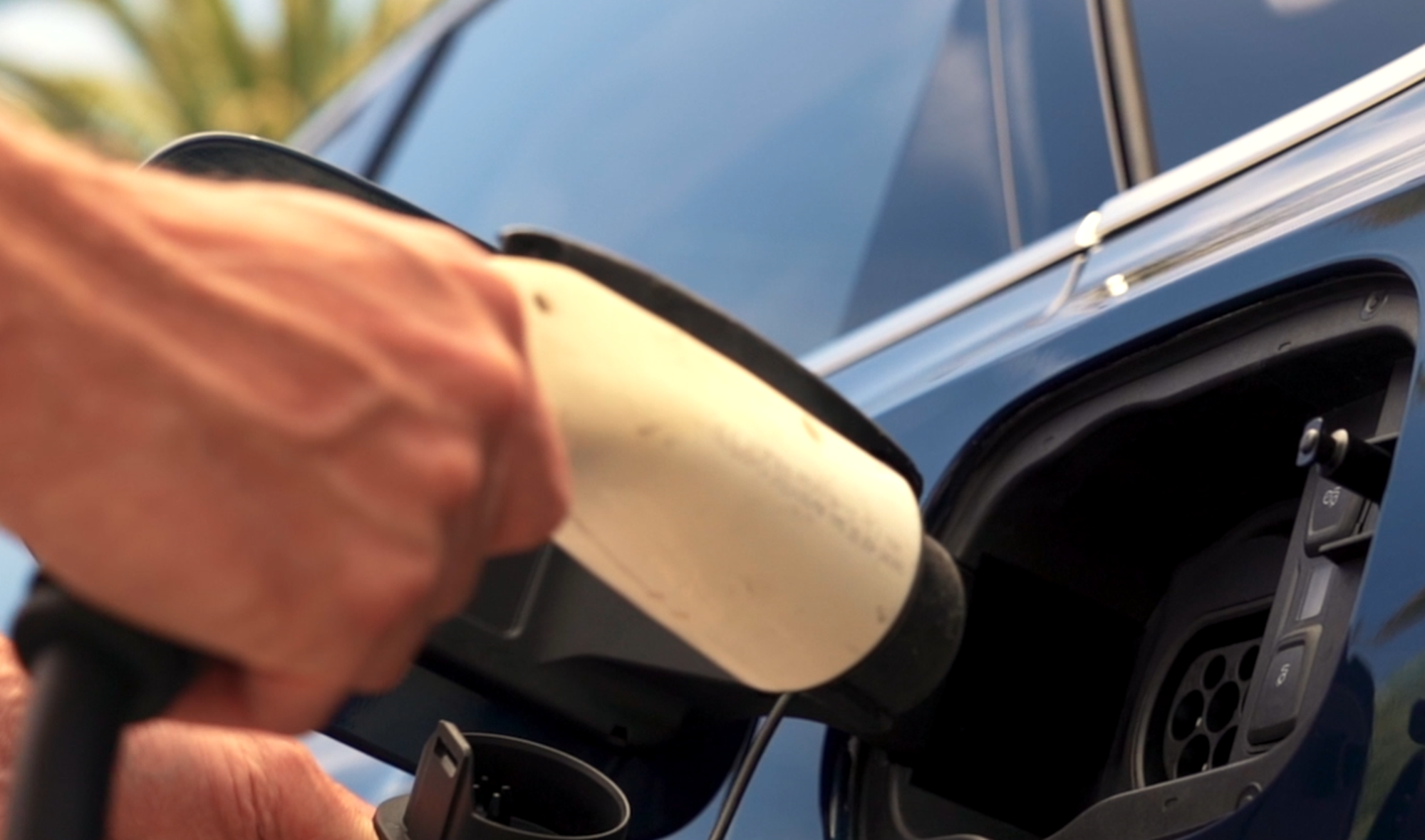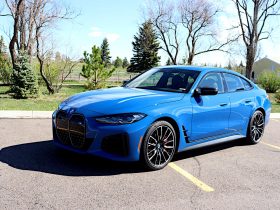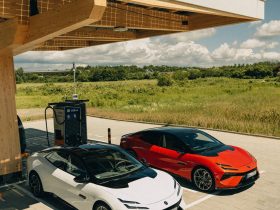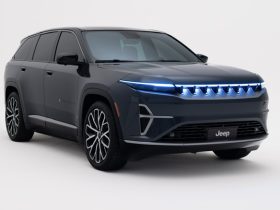There are a lot of misconceptions and questionable “facts” about electric vehicles being thrown around. Many of the memes and headlines about them are combinations of fear-mongering and the cherry picking of information.
Add to that the problem of politicization, which polarizes the idea of electric vehicles into one political camp or another, and things get really eye-rolling. Had the EV been produced and pushed without government calling for mandates or heavy incentivization via tax breaks and grants, then this would not be an issue. But it has happened and thus the electric vehicle has become yet another “Us versus Them” battleground in the nonsense wars of politics that grip our country.
So let’s cut through the bovine excrement and talk turkey. No stupid right-left paradigms, no questionable facts gleaned from Internet memes and podcasts, and no punches pulled on the reality of EVs.
The following are the most commonly-asked questions or commonly-made statements about electric vehicles that I have seen.
Only Rich People Can Afford An EV
This question is mostly an attempt at division via jealousy. It’s common for politically-laced points to attempt to create this kind of emotional response by marking “Us” as being different from “Them” and thus labeling “Them” as the bad guy.
The key here is the word “rich.” It’s not usually defined when making this kind of statement. Each of us has our own idea of what “rich” means. For some, it’s “Hollywood elitists.” For others it’s “evil CEOs.” And for others it’s “banksters and lawyers.” Some just see it as anyone who has more money than they do.
How you personally define “rich” will determine what this statement means to you. The reality is that only “rich people” can afford any new car. That’s been the way of things since the beginnings of automotive. Sure, Henry Ford brought the automobile to the masses, but even then it was about half the average buyer’s income to buy one of his cars and keep it on the road. Today, that’s still largely true with the average new vehicle having a cost of about half the buyer’s income. There are about 165 million working adults in the U.S. right now. There are about 15 million new cars sold each year. The average new car is owned for about 4 years. That tells you what percentage of the population can afford a new car.
Electric vehicles are, in general, more expensive than their standard gasoline counterparts. That’s true. But that’s been true of every new technology ever introduced. It’s always the purview of the “rich” in the beginning. Those watching the market will see that the price of an EV is getting more affordable for more people as more of these vehicles are produced.

There’s No Place To Charge
We live in an age where electricity is all around us. In fact, it’s probably our most abundant resource as a daily-use item. Our society literally exists because of electricity. Yet this doesn’t mean that it’s available in the form required for every need at every location. So the “scarcity” of charging options becomes a topic.
Many people have a home or parking space with a plug and can plug a car into that if need be. As EVs proliferate the market, gaining shares of total sales, the infrastructure for them will also grow. Currently (ha!), for example, there are charging stations at several locations in most cities. But for the most part, people who drive electric vehicles tend to do nearly all of their charging at home, not on the road.
This means that while it may be difficult to road trip in your electric vehicle, it’s easy to use it as a daily driver most of the time. Right now, EVs are generally second or third vehicles in rural areas and are main vehicles in urban environs. Meaning farmers, ranchers, and those who drive longer distances more than very occasionally won’t own an electric vehicle as their only option. Most of the people who do own an EV drive them as a daily use vehicle and switch to a gasoline or diesel vehicle when they have a longer distance or more specific use case (such as a pickup truck or large SUV for towing).
Recharging Is Expensive
That’s not exactly true. Recharging at fast chargers is expensive compared to charging at home, sure. But that’s true of eating at a restaurant versus cooking at home as well. You’re paying for convenience of service, not power.
As an example, I had a Ford F-150 Lightning for review and charged it at home during that week of driving. Total fill up cost was about $12 from empty at current electricity rates. You won’t fill an empty F-150 gasoline model for that cheap.
Most don’t consider that electric vehicles also have little to no maintenance required. There are no oil change intervals, transmission or coolant flushes, timing belts/chains, etc. Just brakes and tires. And brakes are usually at longer intervals because the e-braking (regenerative brakes) do most of the work most of the time, saving wear on the physical brakes. Tires are the only downside, generally requiring replacement more often due to the heavier weight of an EV.
Using Electricity To Power a Car Is More Polluting Than Gasoline or Diesel
This is a highly subjective statement. Since we have a question below about batteries in particular, we’ll skip that part and just talk tailpipes.
There are a lot of variables in this mix, but most of them are in the electric vehicle’s favor. Electricity is both cheaper to produce and cheaper to transport than are liquid fuels. Even if the production is from coal, the amount of savings to be had in terms of energy cost per mile is in favor of electric over gasoline and definitely in favor of EVs over diesel. That changes with biodiesel, of course, but not by very much.
From an environmental standpoint, there are three advantages to electric vehicles:
- They centralize the pollution produced, making it easier to clean up.
- They remove most of the pollution created by delivering the power source to the vehicle. There’s no way around the efficiency of power lines versus diesel-powered trucks or trains hauling tankers of fuel.
- Extracting fossil fuels to run a power plant is simpler and cheaper than extracting those fuels, refining them, and transporting them to a pump for combustion engines. And the mix of so-called fossil fuels used to make electricity is greater than the portion of just one type (oil) that can make gasoline and diesel.

Electric Vehicles and Their Batteries Pollute More
This one is a tough nut. There are studies showing both more and less pollution via EV batteries. Most of them depend heavily on the use cycle of the battery itself. As electric vehicle batteries age and cycle out of use, they can be tossed in a landfill or recycled. Recycling can be partial or full.
Most EV batteries use lithium as a core ingredient for power storage. Lithium is highly recyclable. So are the base metals used in most of the circuitry and mixtures. The least recyclable part is the plastics. But plastics are found in gasoline and diesel vehicles too. And with the same problems.
Currently, only about five percent of the lithium used in batteries actually gets recycled. Most of those batteries, however, are not from cars. They’re from smart phones, cordless power tools, and other household items most people seem to have no issues owning. The lithium isn’t recycled because it’s just not good business when items are that small scale. Uptick to larger batteries that are easier to centralize, however, and lithium recycling can quickly grow.
In the early days of automotive, the lead-acid batteries used in just about every vehicle–whether electric or not–were typically just thrown out with the rest of the garbage. It’s not unusual for farmers, for example, to till the ground near the older buildings on their land and churn up all kinds of midden that includes lead-acid batteries. After a while, it was clear that this was not a good thing and the business case for recycling those batteries (versus making new ones) was good enough that recycling started becoming a thing.
Today, about 95 percent of automotive lead-acid batteries are fully recycled. There’s no reason to believe that lithium won’t be the same eventually.
Child Labor Is Used To Make EV Batteries
Here’s where things get sticky for electric vehicles. There’s no way to paint this pig nicely. The extraction of lithium, cobalt, and other resources required for the production of the currently-used batteries is a nasty, terrible business.
But that’s changing. As more and more lithium is found and extracted, more and more attention is put on where it’s coming from and how it’s produced.
Yet we have to ask whether this really matters to us in the end. We all know that clothing is produced in sweatshops, iPhones are produced in near-slavish factories, and wars are fought over petroleum resources. Yet we keep buying those things and rarely bring them up as a downside to our consumption. Did you buy a diamond ring when you got married? Your love is symbolized by slavery and child labor. Woops.
So to pretend that this is a reason to not buy an EV is disingenuous. It’s hypocritical at best to cite this as a lone reason to hate on electric vehicles. Often while posting online using sweat-shop devices while wearing sweat-shop clothing.
Getting Caught In a Highway Shutdown In Winter Means Dying In Your EV
This one is fun because it’s based on assumptive math and perpetuated by memes more than any other anti-EV claim.
The short answer is that you’re actually better off in an electric vehicle during a highway shutdown in a snow storm than you are in a gasoline or diesel vehicle.
First, there’s no danger of carbon monoxide poisoning. Second, the EV doesn’t “idle” and waste fuel and thus will likely last longer than will the combustion vehicles around it. Since the EV only uses power to run what is being used, it’s more efficient at waiting around at a standstill. Your combustion vehicle, on the other hand, will use a third to a full gallon per hour while idling. Even if you don’t have the heat on full blast or are cranking the radio. Just keeping the engine running means using that much fuel.
The instances of electric vehicles “bricking” during extreme cold aren’t happening while the EV is being used. They happen when it’s been left sitting (off) for a long time in those temperatures (and usually with other mitigating factors) before being “started.” It’s safe to say that if you’re on the highway already, your vehicle wasn’t shut off for a long period of time. You’ve been driving.

Severe Weather Will Kill Battery Range
I live in Wyoming. I’ve driven a lot of electric vehicles. From cheap ones like the Nissan LEAF and the Kia Niro EV to expensive ones like the Mercedes-Benz EQS and the F-150 Lightning Platinum. The most power I’ve lost to sub-zero overnights or while driving in those kinds of temps is about three percent. That’s not much different from your gasoline or diesel’s losses in the same situation.
And to quantify that, I don’t park in a garage or heated building. These vehicles were parked outside. I’ve experimented by leaving them parked and not plugged in to see how severe weather would effect them. Losses were minimal.
Add in that an EV instantly starts producing heat for the defrost and cabin when started and you can understand why an EV might actually be preferable in the winter.
Battery Replacements Are Extremely Expensive
This is true. But so is an engine overhaul or replacement. The difference here being that batteries have a minimum 8-year warranty that promises at least 85 percent capacity by that end of warranty. Your engine? Average warranties are only 3 years. And electric cars don’t have complex gearboxes, which are actually the largest fail point for a combustion vehicle.
So yes, batteries are very expensive to replace. But not much more than your engine/transmission or drivetrain is when it goes south.
Remember that warranties cover their duration as a minimum. Which means that engineers at the manufacturer are likely doubling that time frame in order to keep the company from losing face or going bankrupt over warranty claims.







